Review: The Stonewall Dutch
Dutch Stonewall Defence can make White's life miserable. It's an interesting theoretical opening againt 1.d4. Davide Nastasio found his old love and started a deep investigation to learn from World Champions like Botvinnik and Carlsen. Enjoy this review and his findings about GM Erwin L'Ami's Dutch Stonewall DVD.
Review: The Stonewall Dutch
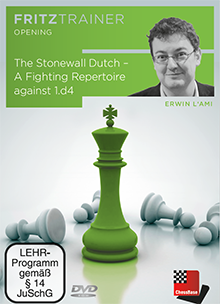
I realized this review has become more similar to a theoretical article. The reason is simple. If one is serious about playing the Stonewall Dutch, he or she must consider the homework duty which comes with learning this quite interesting opening. The fact that the Dutch is employed routinely by the top players in the world shows how such opening is still alive and dangerous for those who are unprepared! L'Ami is quite honest in his positional evaluations and recommendations. However, be ready for a bumpy ride!
The Dutch is the first opening I learned against 1.d4, always thanks to a Chessbase DVD - The Dutch Stonewall, made few years ago by IM Lilov.

For those who don't know the Dutch Stonewall at all, L'Ami in the intro video shows the pawn structure which arises after the moves: 1.d4,f5; 2.g3,Nf6; 3.Bg2,e6; 4.c4,d5; 5.Nf3,c6; 6.0-0,Bd6;
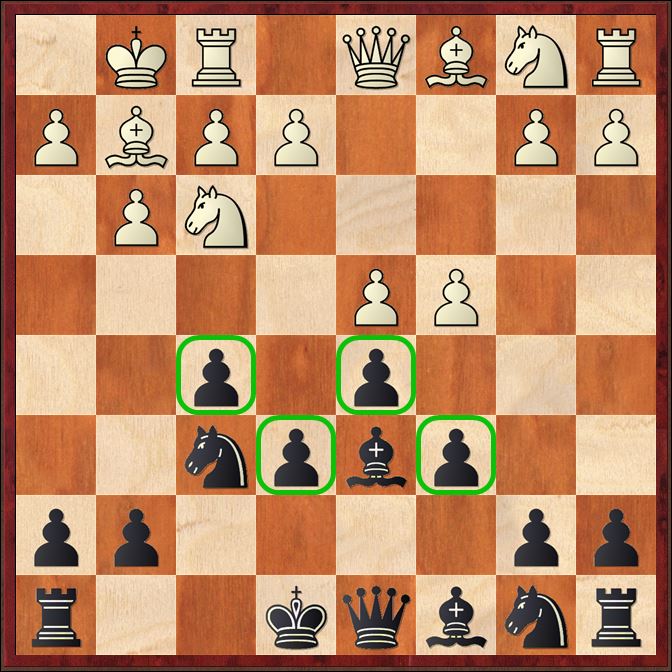
In Lilov's DVD the main classical hero of the Stonewall, was Botvinnik, which we can see at work in the following games:
[Site "Moscow / Leningrad RUS"]
[Date "1933.12.15"]
[Round "10"]
[White "Salomon Flohr"]
[Black "Mikhail Botvinnik"]
[Result "0-1"]
[ECO "A95"]
[PlyCount "60"]
[EventDate "1933.11.28"]
9. Bb2 Nbd7 10. Qd3 Qh5 11. cxd5 exd5 12. Nd2 Ne4 13. f3 Nxc3 14. Bxc3 f4 15.
Rfe1 Bd6 16. Nf1 Rf7 17. e3 fxg3 18. Nxg3 Qh4 19. Nf1 Nf6 20. Re2 Bd7 21. Be1
Qg5 22. Bg3 Bxg3 23. Nxg3 h5 24. f4 Qg4 25. Rf2 h4 26. Bf3 hxg3 27. Bxg4 gxf2+
28. Kg2 Nxg4 29. h3 Nf6 30. Kxf2 Ne4+ 0-1
[Site "Leningrad RUS"]
[Date "1934.08.24"]
[Round "6"]
[White "Mikhail M Yudovich Sr."]
[Black "Mikhail Botvinnik"]
[Result "0-1"]
[ECO "A95"]
[PlyCount "94"]
[EventDate "1934.08.17"]
Qe8 9. Bf4 Qh5 10. b3 Nbd7 11. Rad1 Kh8 12. Kh1 Rg8 13. e3 g5 14. Bc7 Ne8 15.
Be5+ Nxe5 16. Nxe5 Nf6 17. f3 Bd6 18. e4 Nd7 19. g4 Qe8 20. Nxd7 Bxd7 21. e5
Bb4 22. gxf5 exf5 23. cxd5 Bxc3 24. dxc6 Bxc6 25. Qxc3 Qe6 26. Qd2 Bd5 27. Rc1
Rg7 28. Rc2 f4 29. Qc1 Rag8 30. h3 h5 31. Kg1 g4 32. hxg4 hxg4 33. Kf2 Rh7 34.
Rh1 g3+ 35. Ke1 Rxh1+ 36. Bxh1 Qh6 37. Bg2 Bc6 38. a4 Bd7 39. d5 Bf5 40. Rc7
Qh2 41. Qb2 Qg1+ 42. Bf1 Qe3+ 43. Be2 Be6 44. Qc2 Rg7 45. dxe6 Qf2+ 46. Kd2
Qd4+ 47. Ke1 Rxc7 0-1
Unfortunately, my experiences in tournament using the Dutch, against veteran players, didn't go so well. So I began my via crucis in order to find something else against 1.d4.
I studied...
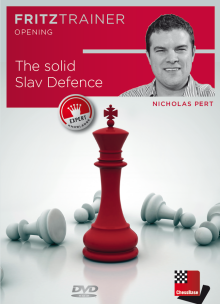
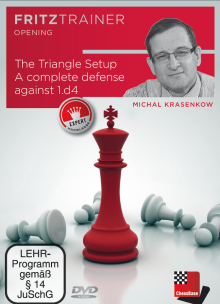
Again things didn't go well tournament wise. I'm not blaming the authors of those DVDs, on the contrary, they did a great job, but from one side I had to mature as player, because I didn't study the opening correctly, and from another side maybe there was too much material for what an amateur like me could really absorb, especially the Slav is really no joke!
So why I'm returning back to my first love? Lately I began to play 1.d4, and I realized that strangely the opening I had most problems against, as White, was the Dutch Stonewall. Now if a player 300 points below me, was able to draw against me using the Stonewall, it made me think. But I archived the experience to bad luck. Then when this new DVD by GM L'Ami came out, I felt the need to learn the Stonewall again, and see if now it would give me better results. An interesting fact is that L'Ami also had my similar experience when playing as White against the Stonewall, and for this reason he made a thorough investigation of this opening, and while working on it, he found even more ways Black could make White's life difficult, and he shares some of his findings in the DVD. This is one of L'Ami's games against the Stonewall.
[Site "Dresden"]
[Date "2008.11.20"]
[Round "7"]
[White "L'Ami, Erwin"]
[Black "Tu, Hoang Thong"]
[Result "1/2-1/2"]
[ECO "A90"]
[WhiteElo "2610"]
[BlackElo "2496"]
[PlyCount "148"]
[EventDate "2008.11.13"]
[EventType "team-swiss"]
[EventRounds "11"]
[EventCountry "GER"]
[SourceTitle "CBM 128"]
[Source "ChessBase"]
[SourceDate "2009.01.28"]
[SourceVersion "1"]
[SourceVersionDate "2009.01.28"]
[SourceQuality "1"]
[WhiteTeam "Netherlands"]
[BlackTeam "Vietnam"]
[WhiteTeamCountry "NED"]
[BlackTeamCountry "VIE"]
1. d4 e6 2. c4 f5 3. g3 Nf6 4. Bg2 d5 5. Nd2 c6 6. Nh3 Bd6 7. O-O O-O 8. Nf3 b6
9. Bf4 Ba6 10. cxd5 cxd5 11. Rc1 Ne4 12. Bxd6 Qxd6 13. Ne5 Nf6 14. Qa4 Bb7 15.
Rc2 Na6 16. Rfc1 Rfc8 17. e3 Rxc2 18. Rxc2 Nb4 19. Rc1 a5 20. a3 Na6 21. Nf4 g5
22. Ne2 Rc8 23. Nc3 Nb8 24. Bf1 Qd8 25. f3 Nfd7 26. Nxd7 Qxd7 27. Qb3 Qd8 28.
Rc2 Kf7 29. g4 fxg4 30. fxg4 Kg7 31. Rf2 Nd7 32. Qd1 Qe7 33. Bb5 Nf6 34. Qf3
Bc6 35. Ba6 Rf8 36. Qg3 Kg8 37. h3 Ne8 38. Bd3 Rxf2 39. Qxf2 Qc7 40. Ne2 Kg7
41. Ng3 Nf6 42. Kg2 Be8 43. Qc2 Qxc2+ 44. Bxc2 Bb5 45. Kf3 h6 46. Ne2 Bxe2+ 47.
Kxe2 Kf7 48. Kd2 Ke7 49. Kc3 Kd6 50. b4 h5 51. gxh5 Nxh5 52. bxa5 bxa5 53. Bd1
Ng3 54. Bf3 Kc6 55. Kd3 Kd6 56. e4 dxe4+ 57. Bxe4 Nh5 58. Kc4 Nf4 59. Kb5 Nxh3
60. Kxa5 Kc7 61. Kb5 Nf4 62. a4 Ne2 63. Kc5 Nc3 64. Bc6 g4 65. a5 Nd5 66. a6
Kb8 67. Bb5 g3 68. Bf1 Ne3 69. Bh3 g2 70. Bxg2 Nxg2 71. Kd6 Nf4 72. Ke5 Ne2 73.
a7+ Kxa7 74. Kxe6 Nxd4+ 1/2-1/2
L'Ami in the introduction says that the Dutch Stonewall has been used by Carlsen to beat Caruana, and Anand. That made me quite curious, because before watching the games I thought Anand, maybe lost because he is old (most people don't understand Chess is a sport, and age definitely makes the difference!), but Caruana is definitely on the top and young, so age cannot be the factor for the loss. Here, the games:
Please pay attention to what could be considered a strange move played by Anand: 16.Nxd7; he gave up a good knight on the good outpost E5, for the bad bishop of the French and in this case the Dutch. I wish my opponents would be so caring and considerate when I play!
Jokes aside, we cannot think a former world champion, but also the lowest player, made a mistake or doesn't know what a bad bishop is. Instead, if we want to win more games, we need to ask ourselves what are the reasons behind that move. If I had to guess I'd say: the bishop is the defender of the light squares, if White traded such a strong knight for the bishop, then the next goal White could have, will be an exploitation of the light squares weakness. Since the result of the game was bad for White, I guess Anand wasn't able to carry out such plan successfully, but the next player could be, so we must always be prepared. Especially today when someone thanks to a silicon friend could overcome the obstacles Anand found over the board.
[Site "Baden Baden GER"]
[Date "2015.02.06"]
[Round "4"]
[White "Viswanathan Anand"]
[Black "Magnus Carlsen"]
[Result "0-1"]
[ECO "A90"]
[WhiteElo "2797"]
[BlackElo "2865"]
[PlyCount "72"]
[EventDate "2015.02.02"]
9. Nd2 a5 10. Bb2 Nbd7 11. Qc2 a4 12. Ndf3 Ne4 13. e3 a3 14. Bc3 Nxe5 15. Nxe5
Bd7 16. Nxd7 Qxd7 17. c5 Bc7 18. b4 h5 19. Be1 e5 20. dxe5 Bxe5 21. Rd1 Qe6 22.
f3 Nf6 23. Bh3 g6 24. e4 dxe4 25. fxe4 Bb2 26. exf5 Qxa2 27. Bf2 g5 28. Rfe1
Qf7 29. Re6 Ng4 30. Bxg4 hxg4 31. Rg6+ Kh7 32. Rd7 Qxd7 33. f6 Qd1+ 34. Qxd1
Kxg6 35. Qd3+ Kh6 36. h4 gxh3 0-1
By the way, in two other Chessbase DVDs, some great teachers: Tiviakov, and Sagar Shah, were advising us to learn from the Classics. Such valuable and important advice is clearly valid in this case, likely Anand, one of the greatest world champions, with a special memory could have remembered unconsciously the idea of taking the Bd7 from the following game:
[Site "Moscow URS"]
[Date "1949.10.23"]
[Round "5"]
[White "Salomon Flohr"]
[Black "Grigory Abramovich Goldberg"]
[Result "1/2-1/2"]
[ECO "A90"]
[PlyCount "95"]
[EventDate "1949.??.??"]
9. Qc2 Bd7 10. Ne5 Na6 11. Nxd7 Qxd7 12. Nd2 g5 13. Nf3 Qg7 14. Qc1 g4 15. Ne5
Nb8 16. Ba3 Bxa3 17. Qxa3 Nbd7 18. Nd3 Rfe8 19. Rac1 Nf8 20. Qb2 h5 21. b4 h4
22. b5 hxg3 23. fxg3 Qh6 24. Nf4 Re7 25. e3 Rh7 26. Bh1 Nh5 27. Qf2 Nd7 28.
bxc6 bxc6 29. cxd5 Nxf4 30. exf4 exd5 31. Rfe1 Nb6 32. Re5 Nc4 33. Rxf5 Re8 34.
Rg5+ Rg7 35. Re1 Rxe1+ 36. Qxe1 Rxg5 37. Qe8+ Qf8 38. Qe6+ Qf7 39. Qxf7+ Kxf7
40. fxg5 Nd6 41. Bg2 Nf5 42. Kf2 Nxd4 43. h4 gxh3 44. Bxh3 Ne6 45. g6+ Kf6 46.
Ke3 Ke5 47. Kd3 c5 48. Bg4 1/2-1/2
Now if taking the Bd7 is not the real mistake which made him lose the game, then we do need to analyze again, and understand why Anand lost, but this goes beyond the scope of this review. Still it is a good hint one should follow if interested in playing for or against the Stonewall Dutch!
The other game mentioned was against Caruana, also this one is quite interesting:
[Site "Shamkir AZE"]
[Date "2015.04.19"]
[Round "3"]
[White "Fabiano Caruana"]
[Black "Magnus Carlsen"]
[Result "0-1"]
[ECO "A90"]
[WhiteElo "2802"]
[BlackElo "2863"]
[PlyCount "104"]
[EventDate "2015.04.17"]
9. Ne5 Bb7 10. Nd2 O-O 11. Rc1 a5 12. e3 Na6 13. Nb1 Bxe5 14. dxe5 Ne4 15. Qe2
a4 16. Nc3 axb3 17. axb3 Qb4 18. Nxe4 dxe4 19. Qc2 Nc5 20. Bc3 Qxb3 21. Qxb3
Nxb3 22. Rb1 Nc5 23. Rxb6 Na4 24. Rxb7 Nxc3 25. Re7 Rfe8 26. Rxe8+ Rxe8 27. Ra1
Rd8 28. Bf1 c5 29. Ra3 Nb1 30. Ra1 Nd2 31. Be2 Nf3+ 32. Bxf3 exf3 33. h3 h5 34.
g4 fxg4 35. hxg4 h4 36. Kh2 Rd2 37. Kh3 g5 38. e4 Rd4 39. Ra8+ Kf7 40. Ra3 Rxc4
41. Rxf3+ Ke7 42. Re3 Rd4 43. f3 c4 44. Ra3 Rd3 45. Ra7+ Kd8 46. Kg2 c3 47. Ra4
c2 48. Rc4 Rd2+ 49. Kh3 Kd7 50. Rc5 Rf2 51. f4 Rf3+ 52. Kh2 Rxf4 0-1
Returning to review the DVD, L'Ami makes right away clear that he will focus on teaching the development of the dark squares bishop in d6. Like he correctly mentions, in Botvinnik's time the bishop was developed in e7.
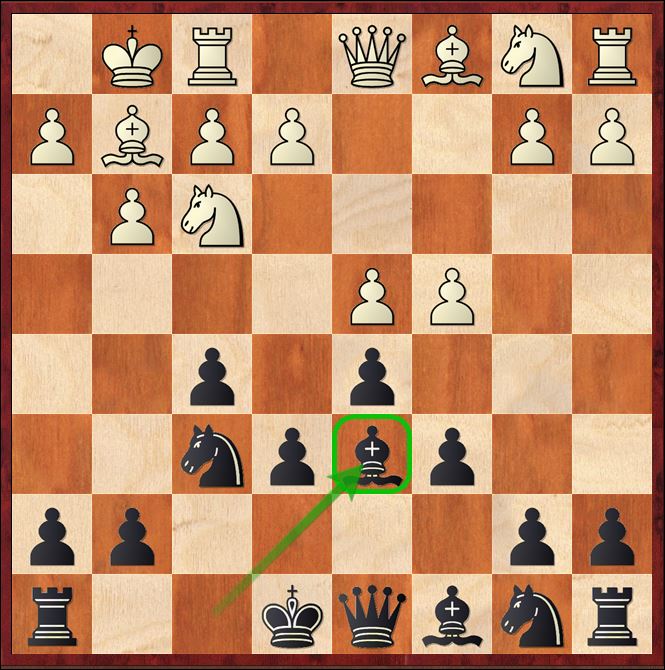
But why was I attracted to the Dutch in the first place? The idea is simple, and connected to what I wrote before, I'm an amateur, not a professional, my time for learning chess is limited, and I do accept the notion that in order to improve we should dedicate less time to learn the openings, and more time to middlegame and endgames. So I try to learn openings where the "ideas" are more important than the correct move order or where is not essential to memorize the first 25 moves precisely like in the Sicilian Najdorf!
The DVD begins with 6 videos of typical maneuvers, and typical ideas. This is done to prove that the Dutch Stonewall is not an opening one needs to memorize sequence of moves, but just need to understand what to do, when, and why.
Then correctly L'Ami also begins a theoretical section, however, there is a lack of coverage of some lines every Dutch defense player should know.
GM Williams, likely the biggest theoretical expert on the Dutch, with many books written on it at his credit, generally advice to play 1.d4,e6;

Why? Because he is also a French defense expert, so if White doesn't want to enter the Dutch with 2.c4, he is quite happy to play the French. But what if White is quite well versed in some deviations like 2.Bg5
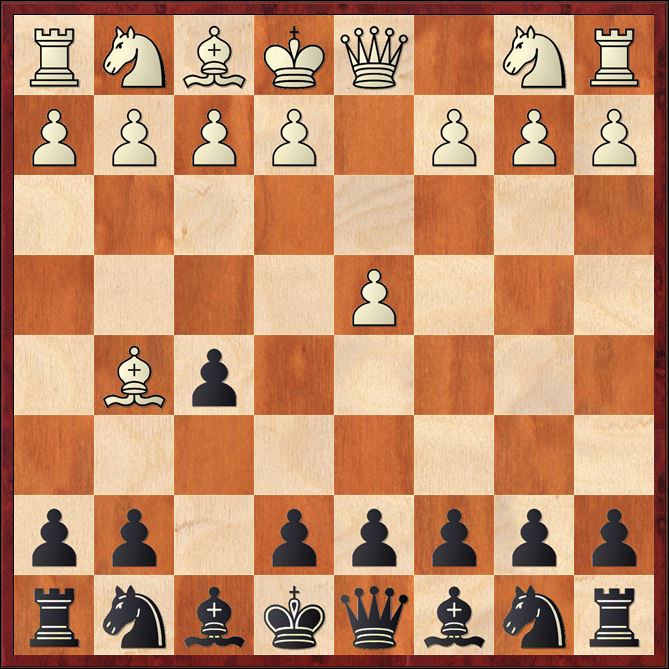
or 2.Nc3?
And what about the Staunton gambit? 1.d4,f5; 2.e4

Notice also L'Ami lost a game against this line,
[Site "Netherlands"]
[Date "2016.09.17"]
[Round "1.2"]
[White "Lubbe, Nikolas"]
[Black "L'Ami, Erwin"]
[Result "1-0"]
[WhiteElo "2485"]
[BlackElo "2611"]
[PlyCount "79"]
[EventDate "2016.??.??"]
Nxf3 Nxg5 9. Nxg5 g6 10. h4 Bh6 11. Qc4 O-O 12. O-O-O d6 13. Be2 Nd7 14. Rdf1
Rxf1+ 15. Rxf1 Ne5 16. Qf4 Bd7 17. Kb1 Kg7 18. Nce4 Qg8 19. Nc5 Bxg5 20. Qxg5
Qe8 21. Nxb7 Rb8 22. Na5 Bb5 23. c4 Bd7 24. Nb3 h6 25. Qe3 Bf5+ 26. Ka1 Qa4 27.
g4 Bd3 28. Nc5 Qc2 29. Nxd3 Nxd3 30. Qxe7+ Kg8 31. Qe6+ Kh8 32. Qf6+ Kh7 33.
Bxd3 Qxd3 34. h5 Rg8 35. g5 Qe4 36. a3 hxg5 37. Qxg5 Rg7 38. Rg1 Re7 39. hxg6+
Kg7 40. Qh5 1-0
Of course one can also win in great style against the Staunton gambit, the idea I'm conveying is that one just needs to study it, and practice it a little to be sure if it happens in a tournament game there are no surprises!
[Site "?"]
[Date "2016.08.01"]
[Round "?"]
[White "Hautot, Stephane"]
[Black "Gurevich, Mikhail"]
[Result "0-1"]
[ECO "A83"]
[PlyCount "44"]
[EventDate "2016.??.??"]
h3 Qa5 9. Kb1 O-O-O 10. g4 Bg6 11. Bg2 e5 12. fxe4 dxe4 13. Nxe4 exd4 14. Bd2
Qb6 15. Nf2 Ba3 16. Bc1 Rhe8 17. Qc4 Ne5 18. Qa4 d3 19. Nxd3 Rxd3 20. cxd3 Nxd3
21. Rxd3 Bxd3+ 22. Ka1 Qxb2+ 0-1
What about other deviations which are really dangerous like: 1.d4,f5; 2.h3,
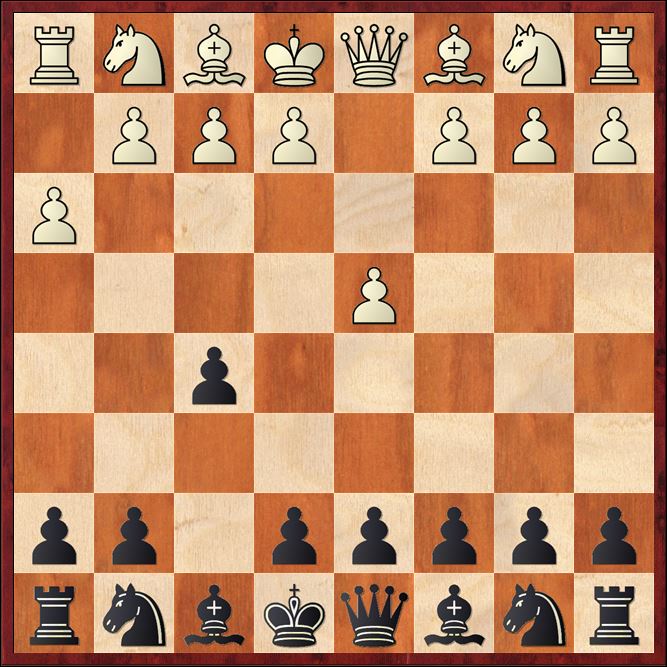
Some players mistakenly think moves like h2-h3 are just waiting moves, they are wrong.
Look what happens in the following game, Black could resign by move 6, and he is a player rated around 2000.
[Site "Budapest"]
[Date "1995.??.??"]
[Round "?"]
[White "Dobos, Jozsef"]
[Black "Szeberenyi, Adam"]
[Result "1-0"]
[WhiteElo "2325"]
[BlackElo "2015"]
[PlyCount "39"]
[EventDate "1995.??.??"]
Rxh8 Qe8 9. Nf3 Nc6 10. Bh3+ Kd8 11. Qxe8+ Kxe8 12. Bxc8 Rxc8 13. Bf4 Nb4 14.
Na3 c5 15. c3 Na6 16. e3 Nc7 17. Bxc7 Rxc7 18. Ng5 Rc6 19. O-O-O a6 20. e4 1-0
Another dangerous line is: 1.d4,f5; 2.g4
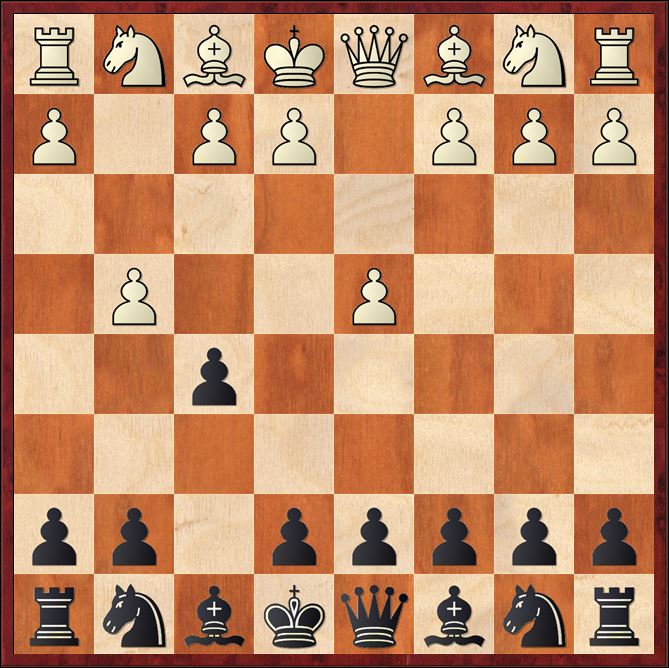
L'Ami being a GM is very likely able to find the right way to refute these sidelines, nevertheless, since I was a Dutch player in the beginning, I did study them to avoid surprises in tournament games, however, it was difficult to handle them in blitz and rapid games, hence the definite need to address them in a DVD, if the opening moves are 1.d4,f5.
While working on the DVD, and the model games I found other possible sidelines not treated, for example:
1.d4,e6; 2.c4,f5; 3.Nf3,Nf6; 4.g3,d5; now instead of 5.Bg2, at club-amateur level a move like: 5.cxd5 can be quite common, how should Black deal against it?
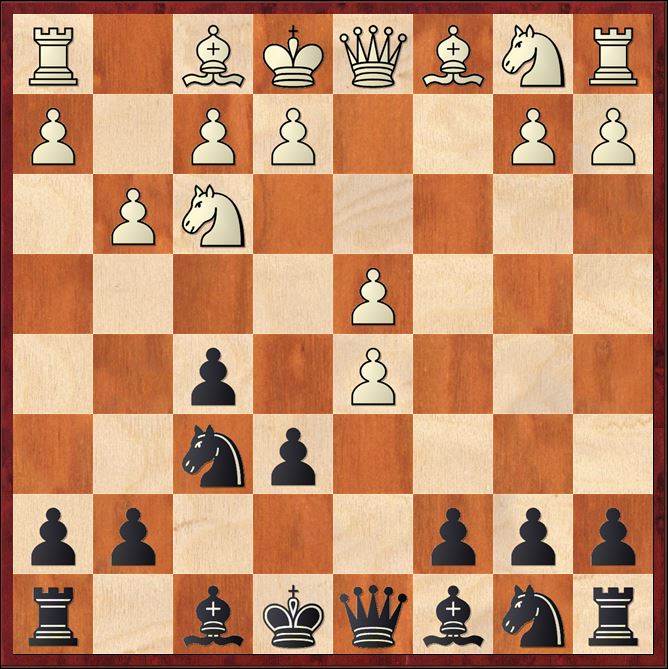
Should Black take with the pawn or the knight? In the 50 model games such line is not treated. Such question is important, because taking with the pawn would change the game, Black wouldn't have a backward weak pawn in e6 anymore. At the same time, out of 7 million games I have in my reference database, only 43 have been played with such line. But was it played mainly by low level amateurs? No, like in the following game where White is rated 2490!
[Site "St Petersburg"]
[Date "1995.??.??"]
[Round "7"]
[White "Lugovoi, Aleksei"]
[Black "Lobach, Pavel V"]
[Result "1-0"]
[ECO "A84"]
[WhiteElo "2490"]
[BlackElo "2250"]
[PlyCount "97"]
[EventDate "1995.09.??"]
[EventType "swiss"]
[EventRounds "9"]
[EventCountry "RUS"]
[SourceTitle "EXT 1997"]
[Source "ChessBase"]
[SourceDate "1996.11.15"]
Qxd6 9. Ne5 Qb4+ 10. Qd2 Qxd2+ 11. Nxd2 Be6 12. Nb3 Nbd7 13. Nd3 O-O-O 14. Na5
g5 15. e3 Bf7 16. h4 h6 17. Rc1 Bg6 18. Ne5 Rhg8 19. Nxd7 Kxd7 20. Nxb7 Rb8 21.
Nc5+ Kd6 22. Nd3 Ng4 23. hxg5 hxg5 24. Ne5 Nxe5 25. dxe5+ Kxe5 26. Rxc6 f4 27.
Rh6 Bf5 28. b3 fxe3 29. fxe3 Rh8 30. Rhf6 Rbf8 31. Rxf8 Rxf8 32. Rc7 a5 33.
Re7+ Kf6 34. Ra7 Be4 35. Bxe4 dxe4 36. Rxa5 Rh8 37. Kd2 Rh3 38. Kc3 Rxg3 39.
Kd4 Rg1 40. Kxe4 g4 41. Kf4 g3 42. Rf5+ Ke6 43. Rg5 Ra1 44. a4 Rb1 45. Rg6+ Kf7
46. Rxg3 Rxb3 47. e4 Rb6 48. a5 Ra6 49. Rg5 1-0
This is all part of the homework one should diligently do. The GM teaching us the opening cannot really cover all the possibilities, furthermore that would create a vacuum in our brains! We do need to learn how to study an opening, and how to keep our openings updated. This is the reason why the Chessbase system is nearly unbeatable for donating us chess knowledge. As we can see from the above example I've found, thanks to Megabase 2017, 43 games on a line GM L'Ami didn't consider, and studied how I should play in such circumstance. Then of course I'll lose some games for whatever reasons, but from my side I've done all the best I could do, with the time I have for studying chess!
On the other hand, I must say I was impressed by the fact that L'Ami addressed the book of a great GM: Boris Avrukh, and gave a line to neutralize what GM Avrukh offered in the book as line against the Dutch Stonewall. Obviously I don't want to say more, because I know a lot of people read my reviews... and it wouldn't be fair toward L'Ami who researched the opening so thoroughly.
The reader of the review could ask me why do we need this DVD to learn the Dutch Stonewall, if L'Ami didn't really cover every possible line? My opinion is the following: we need L'Ami because he has GM level understanding. He is able to see the entire picture of the evolution of the opening, and how is played today, and convey that to us, like a modern art critic would be able to tell us everything behind a masterpiece held in one of the main museum in the world. This doesn't mean we must NOT consult other sources, or do our own homework. It just means that the great part of the work, 70-80% has been done for us through this DVD, and we do need to put effort for the remaining 20%, which are some of the sidelines I've pointed out above. There is also another important point. Today we play many more games than in the past. The average GM has more than 2000 games at his active, just 40-50 years ago, the top GMs had maybe 700-1000 games throughout their careers. Now we have that amount just before becoming titled players, and then 2 times as much in all possible different time controls. This means we clearly need to vary our opening repertoire, both for keeping our opponents in the dark, but most of all for growing as chess players. This is the real reason why we need to add this DVD to our chess libraries, because we want to grow as players. I found the beginning videos about the maneuvers and typical ideas extremely informative, and they gave me the gist of ideas I had to commit to memory. Then when I began to watch the latest games on ECO from A85 to A90, I was already able to spot White's and Black's ideas behind their moves, and how correct or wrong they were, thanks to L'Ami well structured videos!
Now, for a detailed review of what we find inside the DVD: the first 6 videos are typical ideas and maneuvers, they are a MUST watch, because L'Ami outlines clearly, like a great professor, the state of knowledge White and Black have upon this opening, and what works and what doesn't!
Then there are 6 videos on the following tabya 1.d4,f5; 2.g3,Nf6; 3.Bg2,e6; 4.c4.d5; 5.Nf3,c6; 6.0-0.Bd6;

L'Ami did also an exceptional job in choosing the games to teach us about this opening. The comments were great in focusing on the information we need to play the opening, like typical pawn breaks which happen in the above mentioned tabya:
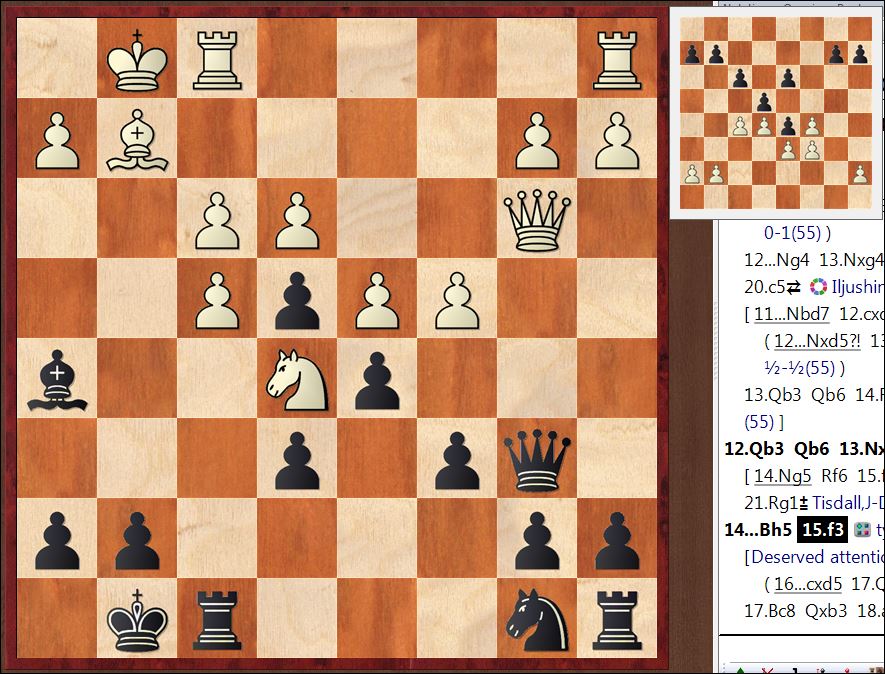
Notice how in Chessbase 14 a small diagram comes out at the right moment, to capture our attention, and make us focus on something which happens every time we have that pawn structure!
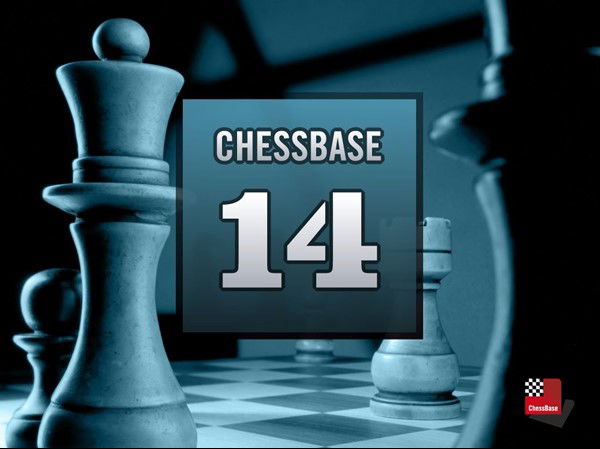
Then follows 4 videos on the following tabya 1.d4,f5; 2.g2,Nf6; 3.Bg2,e6; 4.c4,d5; 5.Nf3 Bd6;
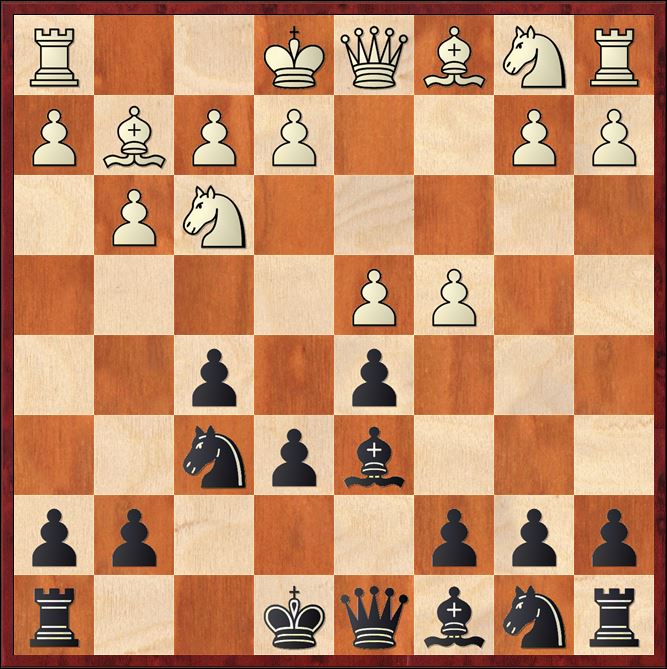
Three videos are dedicated to transposition lines with Nh3, as after: 1.d4,f5; 2.g3,Nf6; 3.Bg2,e6; 4.Nh3,
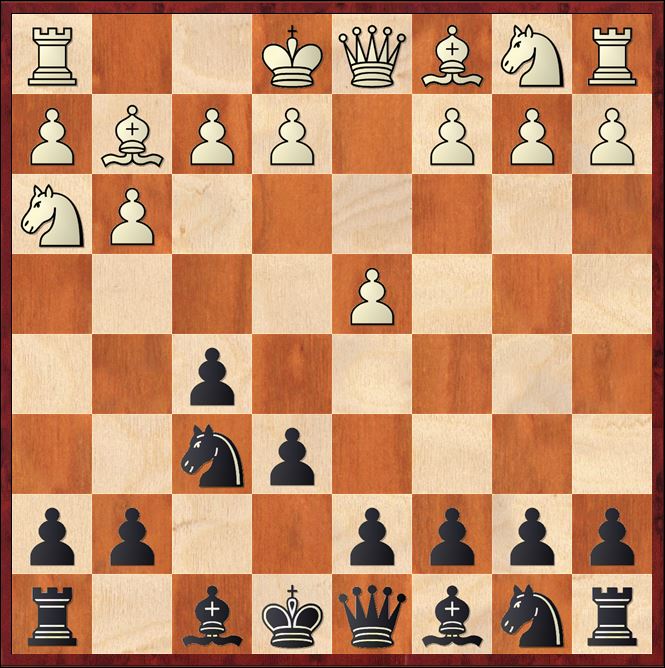
L'Ami dedicates a video just to move order tricks, like those coming out from 1.d4,f5; 2.Nf3,d5;
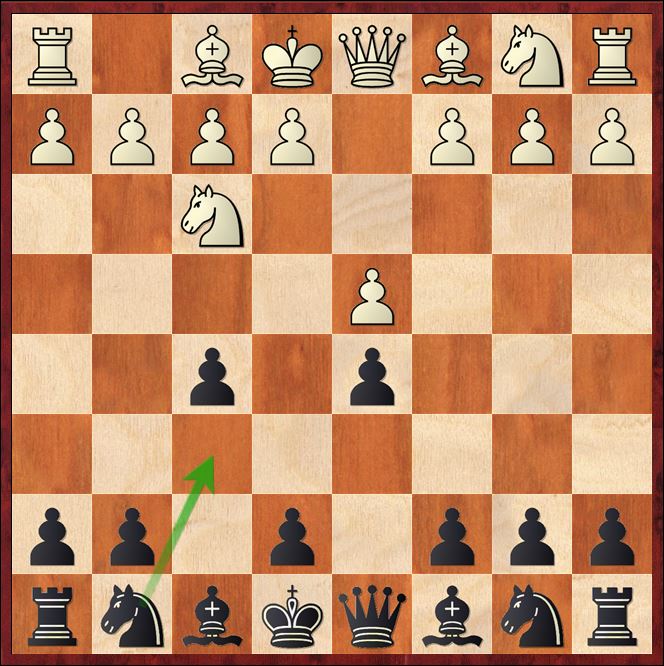
He clearly explains what the move order should be and why, and what he considers a mistake. This is the reason why we need a DVD with a GM explaining how to fine tune our move order, because he brings us to a level of understanding we wouldn't reach on our own.
The last 3 videos are dedicated to sidelines, and the last video is a theoretical overview.
There are 4 videos which are dedicated to interactive training, where the teacher shows us a position or an entire game, and he asks questions to check if we understood the material, through finding the right move or plan. These last 4 videos are quite important in my opinion, one should watch them before a tournament, to see what he remembers, and what he misses of the material. The DVD comes with a database of 50 model games.
The running time of the DVD is approximately 5 hours and 25 minutes, clearly a lot of value for the small price we pay. My feelings for this DVD are quite positive, because I really felt the depth of the preparation L'Ami has. In every video he showed how deep was his grasp of where the pieces should be, and the reasons behind. I really felt he studied deeply the games he quotes as example, and found every microscopic flaw to eventually play against Black or exploit it against White. He must be a monster to play against on the board. And I wish he would make some DVDs with a collection of his games, because he is a great teacher to learn from.
Post Scriptum:
L'Ami on video 22, the one dedicated to 1.Nf3 clearly states that one cannot really enter the Stonewall if White knows what is doing. Such stubbornness in using the Stonewall at all costs could be quite detrimental, and he says one needs to have something else ready. Since I want to have a complete repertoire, and I guess everyone reading this wants it too, I'd like to suggest the DVD made by GM Krasenkow,

In that DVD Krasenkow treats the Stonewall, but he also gives a Semi-Slav repertoire which can work well against 1.Nf3, and cover all the possibilities for Black.
Again in the spirit of doing one's own homework, on the video 21 L'Ami gives a move Bb4, which for him is similar to the Nimzo-Indian, while for me is more similar to the Classical Dutch. Hence, if one is serious about the Dutch, the masterwork written by GM Williams is a must read, because it will give a broader perspective on how to play in many different situations.
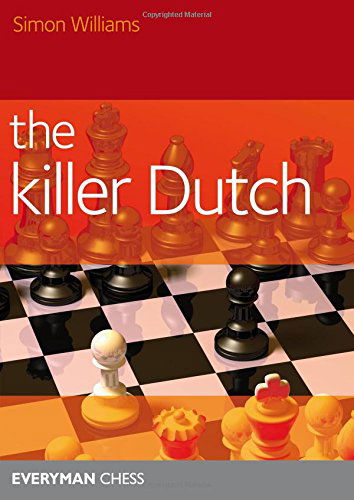
Please don't expect one DVD or one book, for how excellent and professional they are, and L'Ami is clearly a great teacher, will form your chess persona, one needs to be exposed to different authors, and ideas, in order to have a good understanding of the subject. But most of all a player must be an active learner, asking difficult questions, and be ready to pursue the often elusive answer. Good luck in your Dutch games!
About the Author

Davide Nastasio is a novel chess aficionado, who has made of chess his spiritual tool of improvement, and self-discovery. One of his favorite quotes is from the great Paul Keres: "Nobody is born a master. The way to mastery leads to the desired goal only after long years of learning, of struggle, of rejoicing, and of disappointment..." He is one of the main writers for ChessCafe on Chessbase products, he authors articles on British Chess Magazine, and he is one of the main contributors of Georgia Chess Magazine in the new electronic format: Georgia Chess News. He is an active player, and organizes and directs chess tournaments.
